Then last year a bit flipped, and I decided to really try and learn the amazing California flora & fauna I'd spent my life enjoying, yet barely knowing. I mean - I knew more than the average California bear - I grew up with a woodsman father, did yearly camping trips, took bio-science courses at uni, and could name most native trees & mammals, and a number of flowers & birds. And herps - well, they were like a religion for me as a kid, so I knew them best of all.
But, I wanted to go the next level - to eleven - and learn their scientific names, histories, behaviors, interactions, dependencies... Basically, pursue my life-long passion for the natural sciences and use California as a university to learn biology, botany, geology, zoology, and any other ology that captured my wonder and interest along the way.
Which brings us back to the park - Edgewood Park. It has become a fave haunt and muse in this endeavor. The hilly oak woodlands, seasonal creek gullies, chaparral mazes, rolling grasslands and serpentine outcrops of this wildflower refuge have inspired & taught me much.
Btw - it's no small thing to be a fave in the SF Bay Area - there's over 50 parks around the peninsula and south bay alone. Include the north and east bay, and there's hundreds - some of them 10,000+ acres, and many much wilder than Edgewood.
But to me, and many others, Edgewood is special. An oasis in the asphaltum. Small, intimate & knowable - yet never boring. So much so, that a solar cycle, four seasons, and many hikes later - I still thoroughly enjoy the park, and look forward to seeing what secrets it reveals this year.
Here's some of the beautiful reasons why Edgewood is an affair to remember:

Indian warrior leads the early spring show
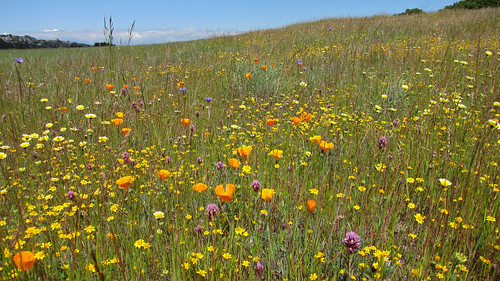
Then a classic California wildflower mix carpets the fields
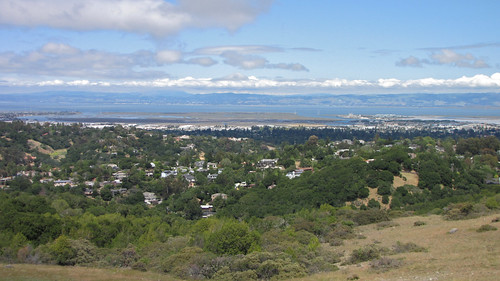
Hillside trails give views of the San Francisco Bay
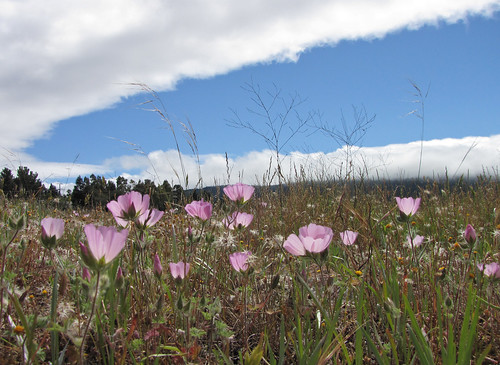
Fringed checker blooms take over as grasses fade
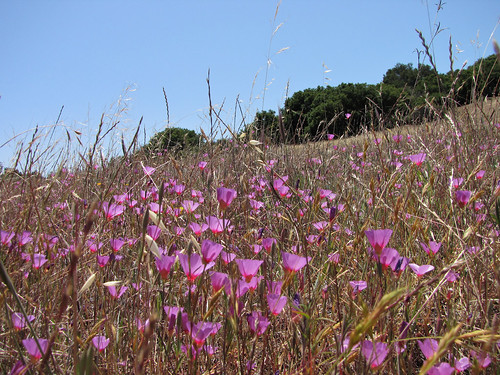
But are ultimately replaced by a hearty Clarkia farewell-to-spring
==
Some of the photogenic characters of Edgewood:
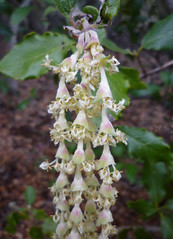
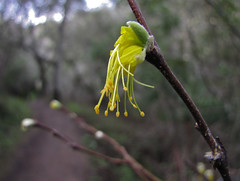
Coast silk tassel and endangered leatherwood
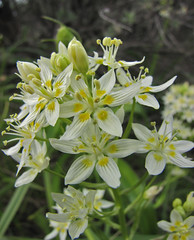

Fremont's star lilies and fairy lanterns

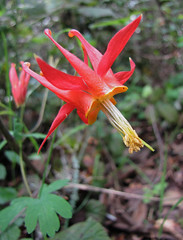
Purple mouse ears and western columbine
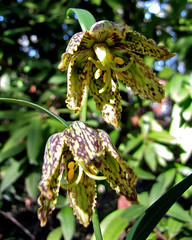
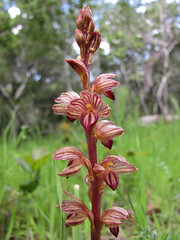
Mission bells and striped coralroot orchids
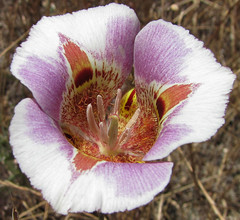
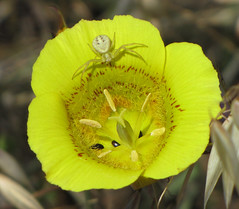
Mariposa lilies and gold nuggets
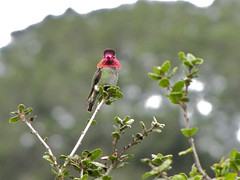
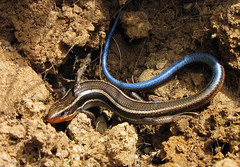
Male Anna's hummer and western skink - both in mating colors
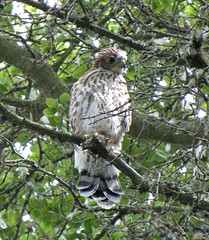
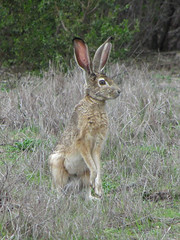
Fledgling Cooper's hawk and curious black-tailed jackrabbit

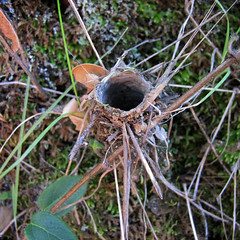
Woodland cicada and turret spider lair
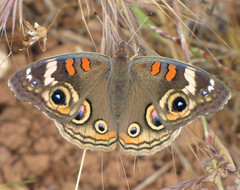
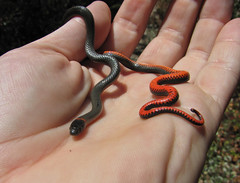
Buckeye butterfly and ring-necked snake
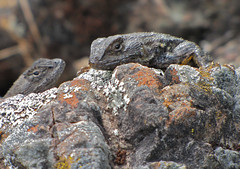
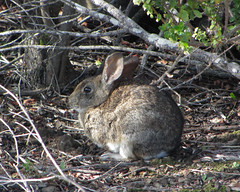
Western fence lizard couple and a brush rabbit
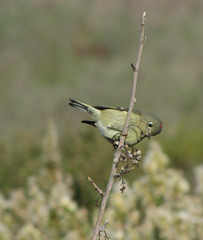
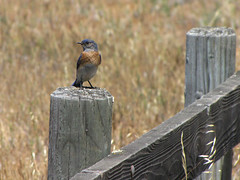
Ruby-crowned kinglet and western bluebird
==
Beauty by Season
Spring - Summer
Edgewood's spring starts early. Look for the first shooting stars, buttercups, sun cups, indian warrior, hound's tongue, leatherwood, bush lupine and star lilies in February. The blooming picks up from there with fragrant fritillaries, purple mouse-ears and mission bells in late March, and by mid-April the fields are thick with color, as poppies, paintbrush, checker blooms, tidy tips, cream cups, lupines, goldfields, blue dicks and blue-eyed grass all vie for pollinator appreciation. Fairy lanterns become common along the shaded trails. Then the spring closers come, as brodiaeas, prettyface, clarkias, gold nuggets and mariposa lilies take the fields in May/June.
Birds start getting frisky early in the year as well - overwintering male anna's hummers squelch from the branch tips, and mating western bluebirds glow like neon. Courting skinks and fence lizards also glow brilliant blue, and young hawks and hummers fledge their nests in May and June. The first summer cicadas also emerge in May.
By late June the grasses go brown, manzanita & madrone go red, and the farther foraging jackrabbits and brush bunnies are on the constant run from relentless redtails, kites, harriers & kestrels. Snakes & lizards bask on trails (sometimes rattlers - be careful!). The scent of sage fills the air. The lovely summer tarweeds now reign.
Deer are seen year round, and occasionally a coyote or bobcat will fade into the grasses like a ghost. Woodrat middens are scattered throughout the wooded areas.
Some of the native flora of spring & summer:




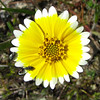




















==
Fall - Winter
The transition from summer to fall sees flower replaced by fruit, as seeds and berries of all kinds start coming ripe for the many critters that live in the park or travel from afar to forage. Elderberry leads a feast that includes toyon, madrone, manzanita, poison oak and honeysuckle. And then there's the acorns from the many coast live, blue, valley and leather oaks. Needless to say, gray squirrels, woodpeckers, scrub & steller's jays are in constant disputes. A few summer wildflowers hang on - cheerful poppies and madia dot the fields into October.
With the rains come the ferns, fungi, lichens, mosses and slime molds - many as bright and beautiful as their counterpart spring wildflowers. The seasonal creeks flow, and the smell of the fallen bay leaves is divine. Many migrating birds stop in to forage, including chickadees, kinglets, cedar waxwings, sparrows and wrens.
Some of the native flora & fungi of fall & winter:



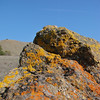

















==
The Nuts & Bolts of Edgewood County Park & Preserve
- 10 Old Stagecoach Road, Redwood City, California, 94062. San Mateo County. Parking and access is just east of hwy 280 at Edgewood Road Exit (4 miles south of hwy 92)
- Good parking, lawn and picnic areas with bathrooms
- Hiking, trail running and horses only - no dogs or bikes
- 467 acres of intertwining trails allows you to create loops of many sizes, from 2 to 8 miles
- Oak woodland, grassland, chaparral and seasonal creeks
- Native wildflower preserve - over 400 species of vascular plants from 75 families and 8 plant communities, including multiple endangered species and serpentine-loving rarities
- Coyotes and bobcats occasionally seen, mountain lions rarely (but they do visit)
- Docent led wildflower tours March to June by Friends of Edgewood (who also run the heroic weed warriors teams that work to clear the park of invasive non-native weeds)
- Well maintained trails - downed trees and trail washouts are gone next day
- Traffic on trails is light - especially on weekdays
- Bit noisy - between hwy 280 and suburban mowers & blowers
References:
- My ongoing, chronological flickr photo set of Edgewood Park
- San Mateo County Parks - Edgewood Park & Preserve
- Friends of Edgewood
- Toni Corelli - Flora of Edgewood Park (also in book form)
- Bay Area Hiker - Edgewood Park
- Calflora.org - What Grows Here - Edgewood Park

Great piece, and exceptional photographs, your post gets me to thinking about how much (or little as the case really is!) that I now about the flora and fauna whilst I’m ‘out there’ and I really must do a lot more to increase my knowledge and hence enjoyment. Thank you for sharing your thoughts and pictures.
ReplyDeleteRegards,
John
An amazing piece on a beautiful place. It brings back fond memories of my not-long-enough 5-year stint in California.
ReplyDeleteYour photographs are outstanding. Mind if I ask about your setup and whether you use flash?
regards--ted
Thanks John, thanks Ted.
ReplyDeleteJohn - I'm having a blast by learning with a camera. I just take pics of everything new I see on hikes, and then look it up on the web and in books back at home. If you have the time, it really helps the learning process.
Ted - I'm actually a novice photographer. I can't use a viewfinder well because of a poke to my dominant eye I got in bball (eye can't dilate enough), so have always stuck to point & shoots w/ fast LCD screens. All the pics in the post are w/o flash, and almost all taken with a Canon SX1 super-zoom. It's 28mm to 560mm (35mm equiv), and can shoot "super macros" with the object almost touching the lens. It can take fine shots, but you gotta have steady hands. I would recommend the equiv Panasonic model over it though - the Canon really struggles to focus in low light, and reviews of the Panny suggest it's better. I was gonna shift to the Panny but decided to take a deeper plunge and try the new Panny GF1 - a hybrid p&s/dSLR with no viewfinder, but changeable lenses and SLR-like speed and manual controls. So far it's great, but I don't know it it'll prove to be worth the major jump up in price (for my style of naturalist photography).
-Ken
Edgewood Park has been a long-time favorite of mine as well. I happened to read about it when I first moved to SF in 1988.
ReplyDeleteTwenty years later I moved to Washington state in 2008. It's great to see this lovely tribute to such a special place.
Thanks!
Suzanne
I was searching for ring-necked snake on your blog and found this post. Whoa! This is incredible, Ken. Do you think Edgewood would be a good place to visit come May 10?
ReplyDelete